A loose gaggle of souls gather around a dimly lit tailgate of a red pickup truck. Short shuffles of feet and fervent displays of joy and relaxation cloud the night as conversation and ancient sediment envelop the desert air. An array of headlamps shines in my direction, each one belonging to a veteran who came from around the country to participate in a Navajo Nation Sweat Lodge Ceremony, an outing sponsored by the Sierra Club’s Military Outdoors program.
Our Sweat Lodge outing takes place every autumn in the iconic Monument Valley, which belongs to the Navajo Nation. To the north lies Cedar Mesa and Grand Gulch; and stretching for miles and miles is the now-disputed and threatened lands of Bears Ears National Monument.

(Photo: Kirby Kimble)
Bears Ears—the original 1.9 mil acres drawn out by the Tribes—holds a resolute power which the Navajo Nation has revered and cherished long before European settlers first stepped foot in the wild west of the “New Land.” This is evident today at any of the incredible archaeological sites located here.
Traditionally, Navajo Sweat Lodge ceremonies are reserved solely for those members of the Navajo Nation who have gone to fight and carried the burden of their people. However, Jonah Yellowman, the Navajo spiritual leader for our “Sweat” believes that military veterans know the weight of this burden all too well, each having dealt with her or his own battles, demons, or hardships.
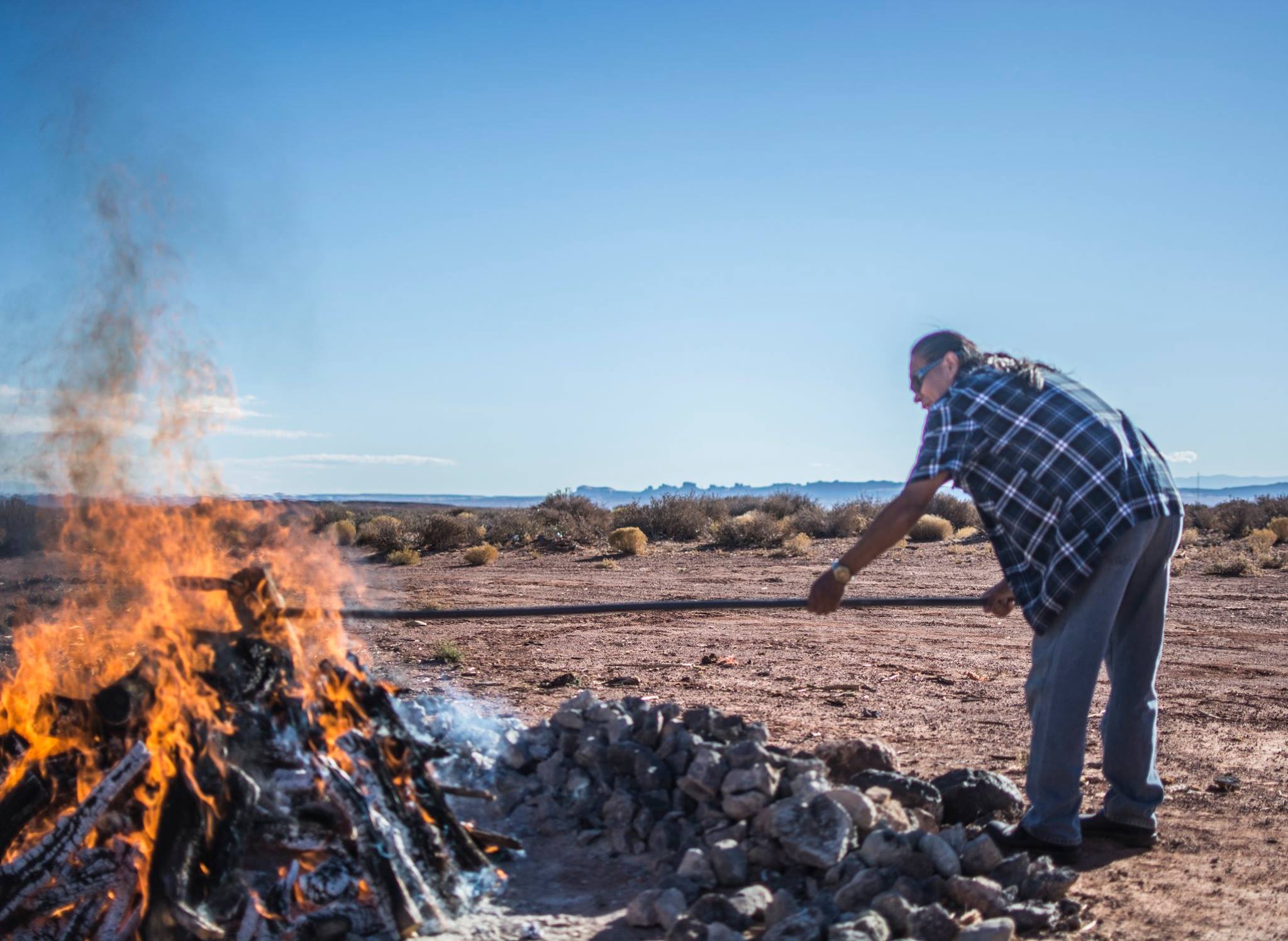
(Photo: Kirby Kimble)
The chants, songs, prayers, and people have strong ties to the natural world. When the ceremony begins, there are no phones or cameras, just heat and darkness, the smell of cedar and sage. Veterans leave the ceremony with a powerful and welcoming sense of comfort and open acceptance in what they have so freshly experienced. The intimate details of the ceremony and the stories spoken are not shared outside of the Sweat, for they are considered the sole property of those who have experienced it.
Such belief in the healing of the natural world sculpted our Sweat Lodge into a trip which included both service and exploration. 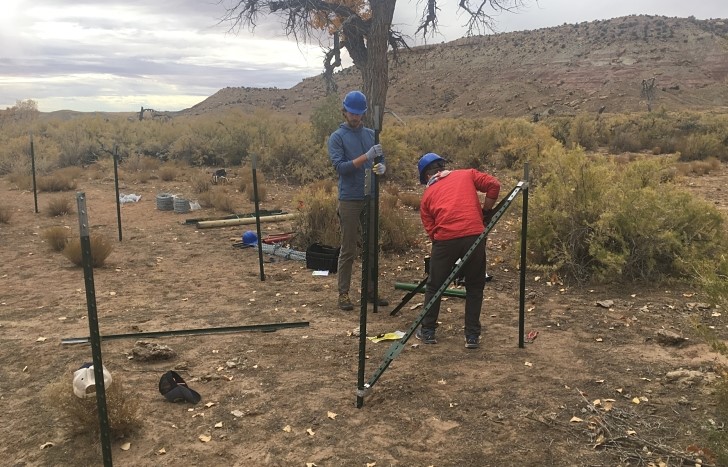
(Photo: Lindsey Robinson)
On Saturday, the day prior to our Sweat, our Military Outdoors group met in Bluff, Utah for a day of field work. Friends of Cedar Mesa (FCM), the leading conservation group in the region, needed volunteers to construct a fence around the historic Shumway Cabin, and we had eagerly signed up to help. The cabin had previously been left in shambles, and had been largely restored thanks to FCM, the local community, and descendant Kay Shumway. The fence we helped FCM construct would prevent the freely grazing cattle from resting against the house and damaging the walls of this century-old homestead.
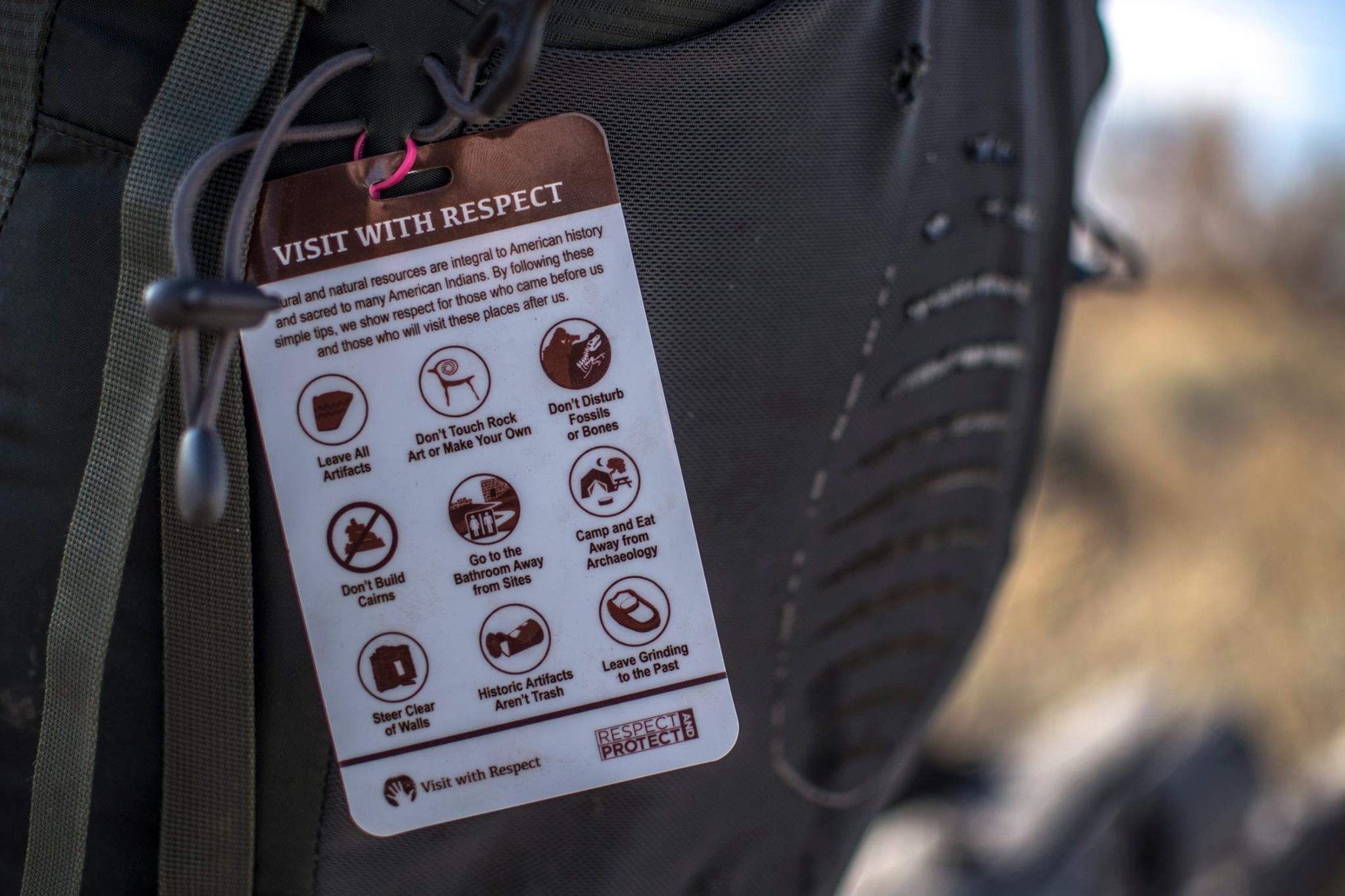
(Photo: Kirby Kimble)
In addition to a day of hands-on community service, we spent Monday morning with staff from Friends of Cedar Mesa discussing their work and the need for respectful, dedicated management and protection of Bears Ears. Over breakfast we talked about the history of Bluff, Utah and Cedar Mesa, from the Ancestral Puebloans to the Mormon Pioneers to the swarm of visitors that come each year to taste the past—and hopefully!—visit with respect.
For the last two days of our desert trip, our group headed into the backcountry of Cedar Mesa. It was an effort to unplug, to process the emotions and lessons of the previous days, and to spend time in Bears Ears National Monument.
Descending into Grand Gulch was a transformative experience. From the rim of the canyon, very little looks as if it could survive, despite the fact that these canyons were cut by the mighty Colorado and San Juan Rivers. The descent itself was no simple task, requiring route finding, down climbing, and stepping carefully around loose rock debris that could easily tumble and slide off the tiered ledges, landing some 750 feet below.

(Photo: Nathan Smith, @pullphoto)
Arriving on the canyon floor, our previous misconceptions of a barren and lifeless landscape are erased, instead revealing 6-ft tall sagebrush which hides chipmunks, birds, snakes, scorpions, and provides shade for the deer and wild burros. Ancient, almost alien, Petroglyphs (rock art in which the designs are carved or pecked into the sandstone) and Pictographs (designs which are painted on top of the sandstone using muds and paints) speckled the alcoves above us. Springs, despite our dry season travel, seemed to appear and disappear at our feet, in and out of the weathered and eroded sandstone boulders. Sunlight illuminated the deep canyon walls, burning in various shades of warm color which we named “canyon-glow.” 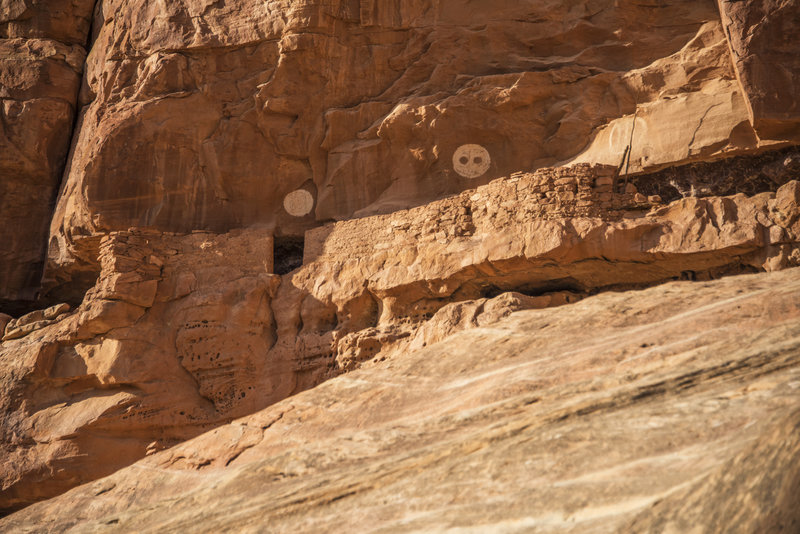
(Photo: Nathan Smith, @pullphoto)
For two days and twelve miles we backpacked through the canyons, stopping often to further explore the numerous archaeological sites and natural formations. It is estimated that tens of thousands of peoples once lived in Grand Gulch; walking through these game paths or trails left by ancient peoples, I half expected to see spectral forms of ancient canyon dwellers and their communities.
At night we ate dehydrated meals and set up camp under a pitch-black sky. It was dark by 7pm, and many of us took the opportunity to enjoy an early night of rest. I stayed awake a bit longer, eager to see the desert sky at night. When the full moon rose, stars splattered across the abyss in a display that can’t be described. I fell asleep at peace. 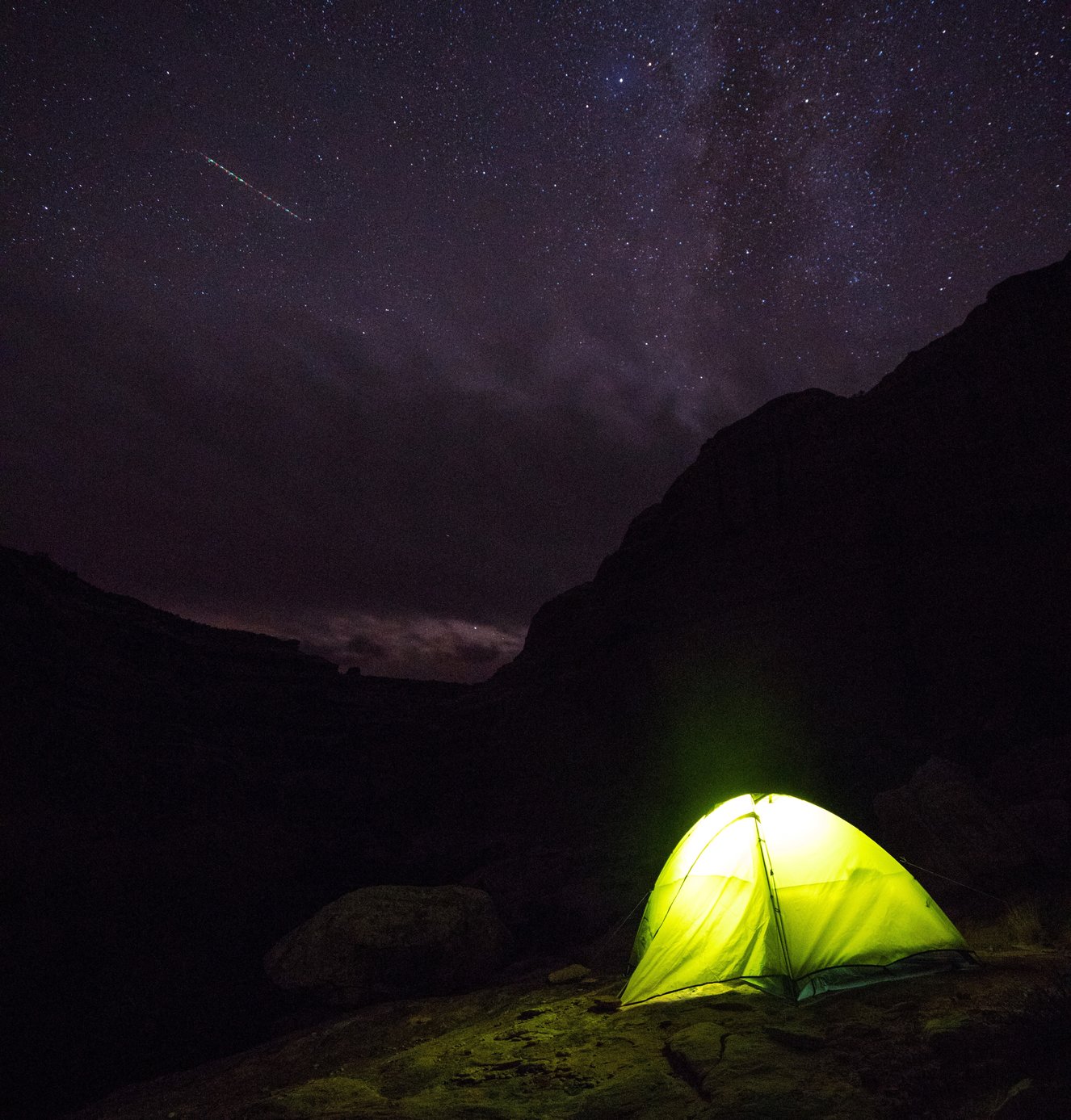 (Photo: Nathan Smith, @pullphoto)
(Photo: Nathan Smith, @pullphoto)
Our second day in the canyon and our last day of the trip, we awakened to the rustling of a gentle breeze pouring through the leaves of trees deep in the canyon. Each veteran packed up camp at their own pace and stepped aside for moments of quiet reflection, a quick read of a book, or a gentle conversation. The day’s travel saw sandy paths, difficult to locate archeological sites and springs, a bit of bushwhacking, and a craggy ascent back to the trailhead and back to our “real lives.” 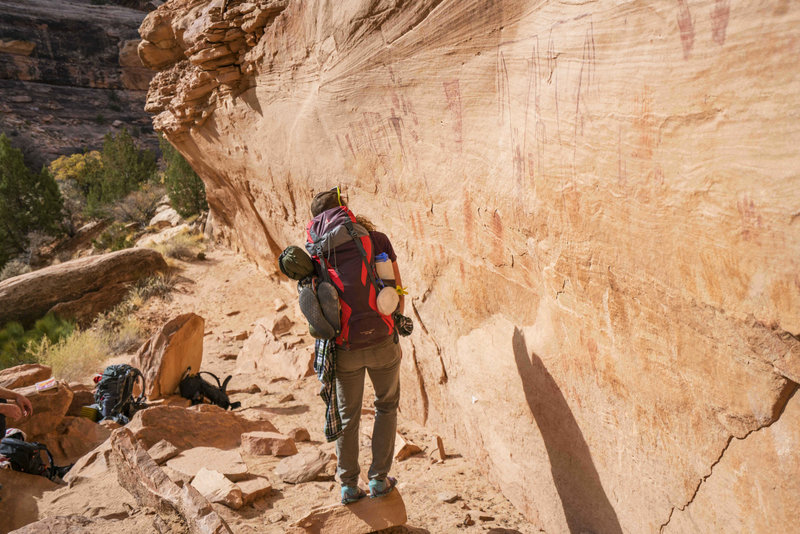
(Photo: Nathan Smith, @pullphoto)
Outings and endeavors such as these—community service, ancient ceremonies, and backcountry exploration—are special to our veteran community. Beyond the activities themselves, we build relationships with each other and with the natural world. Lifelong friendships have budded and new outlooks on hardship, life, military service, reintegration, and conservation have evolved from our Sweat Lodge trip, and that gives us as veterans a desire to come back, as well as to give back.
Here’s how you can help protect Bears Ears:
- Donate to Utah Dine Bikeyah;
- Donate to Friends of Cedar Mesa;
- Support this Kickstarter to build an education center to teach visitors how to visit with respect and promote responsible recreation throughout the Bears Ears region;
- Support NativesOutdoors. $5 from each hat purchase will be donated to the Kickstarter.
A special THANK YOU to all who made this trip possible. Rob Vessels, Dan Shoemaker, Jonah Yellowman and the Navajo Nation, Friends of Cedar Mesa (specifically Josh, Amanda, and Brit), and our incredible team of Military Outdoors leaders and veterans on the ground running these trips.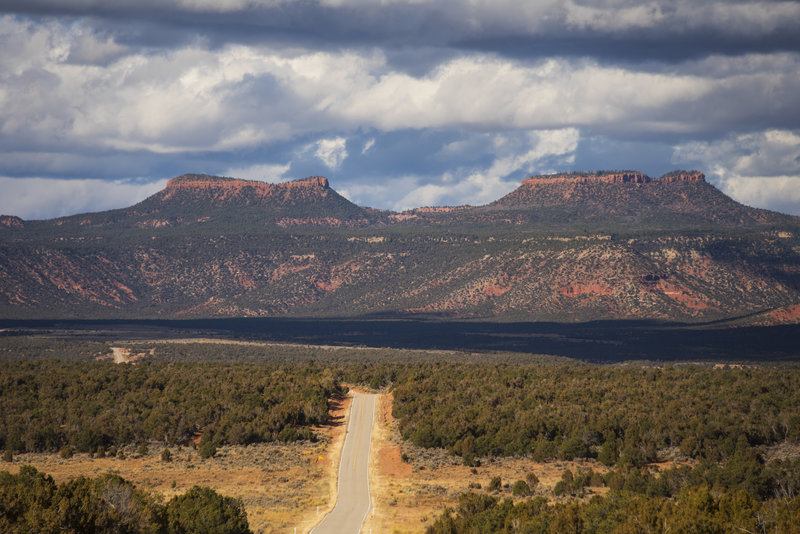
(Photo: Nathan Smith, @pullphoto)
